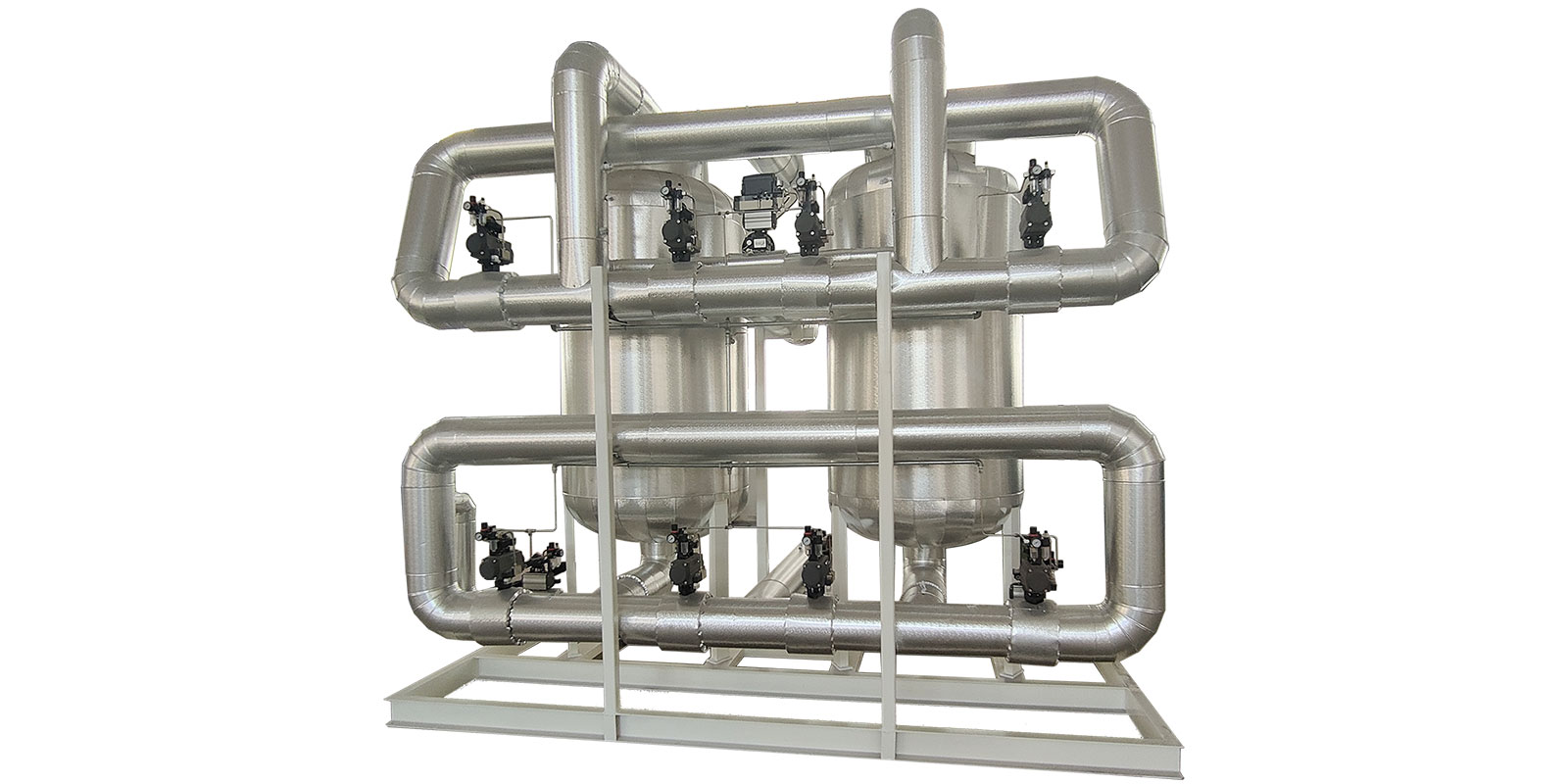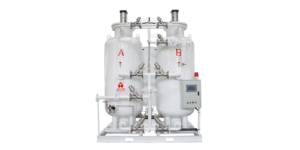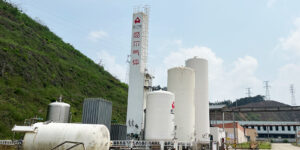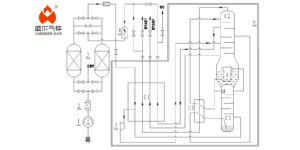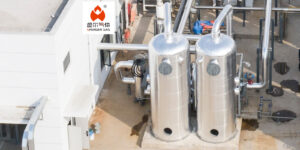Air separation equipment, as large industrial machinery, can produce thousands of tons of liquid nitrogen and liquid oxygen within an hour. Consequently, the energy consumption during production is extremely high, especially the electrical energy loss. Therefore, while fully leveraging the capabilities of air separation equipment, it is also crucial to help companies reduce investment costs and address the issue of excessive energy waste.
Energy Saving for Air Compressors
Air compressors typically use heat exchange methods to reduce the large amount of heat generated during operation. However, this method results in significant heat loss and requires substantial electrical energy consumption. Necessitating appropriate energy-saving measures.
- Installing Recuperators on Compressor Pipelines
This allows the heat generated by the equipment to be used for hot water production, which can then be applied to heating or bathing. This approach eliminates the need for additional heating equipment and reduces electrical energy consumption.
- Configuring Heat Exchangers on Pipelines
This facilitates heat exchange between contaminated nitrogen and air, processed by a heater.
In the chemical industry, self-owned power plants are common. Thus, air compressors can use steam from these power plants to drive turbines, powering the compressors. This not only utilizes the excess steam from the power plant but also saves electricity.
Molecular Sieve Purification System
During the application of molecular sieve purification systems, a substantial amount of heat energy is lost. And the temperature of electric heating elements becomes highly unstable. This instability can damage the performance of electric heaters and shorten the equipment’s lifespan. Implementing energy-saving measures can reduce cooling time by directly treating the adsorber during blow cooling.
Secondly, after energy optimization, electric heaters are used solely for heating, maintaining the stability of the heating element’s temperature.
Rectification Column Reflux
The primary function of rectification column reflux is to regulate gas production, thereby reducing the energy consumption of power equipment. Currently, there are three common types of rectification columns: liquid oxygen columns, liquid nitrogen columns, and air columns. For liquid oxygen and liquid nitrogen columns, adding oxygen and injecting it into the main cooler can vaporize liquid oxygen. Which can effectively convert nitrogen into a liquid state, thus increasing the liquid nitrogen content. To reduce oxygen supply, liquid nitrogen is introduced into the upper column.
This conversion technology is particularly suitable when there is an insufficient oxygen supply. Compared to the hydraulic vaporization method, this approach has better energy-saving effects, helping enterprises achieve higher economic benefits. Additionally, this energy-saving solution significantly reduces nitrogen discharge rates. By applying reflux and conversion technologies, there is no need to use large air separation equipment. In cases of high nitrogen content, nitrogen can be directly recovered, ultimately producing liquid air products stored in refrigeration.
In conclusion, the rapid development across various sectors has inevitably led to an energy crisis. Which making energy conservation and environmental protection a primary goal for all countries. Despite the increasingly sophisticated functionality of air separation equipment driven by advanced technology, its energy consumption remains high. Therefore, targeted treatments for different types of equipment are currently needed to successfully achieve energy-saving goals.


